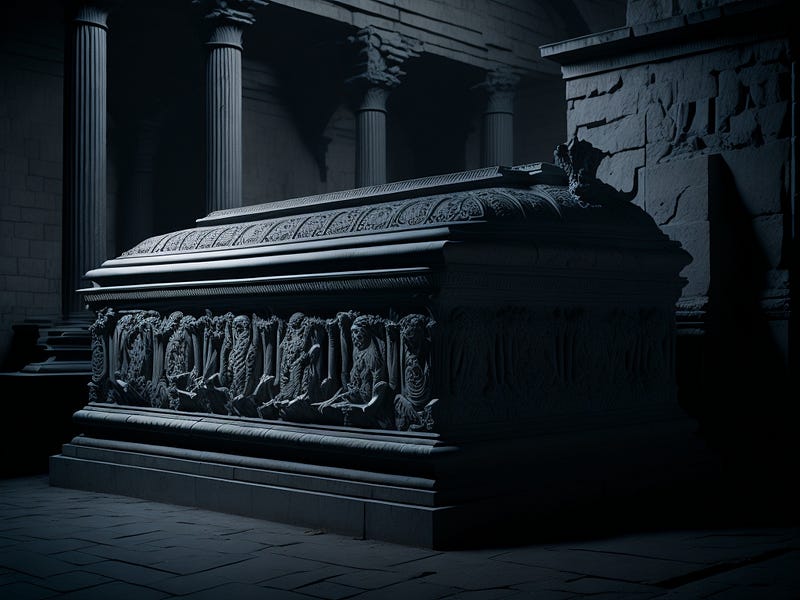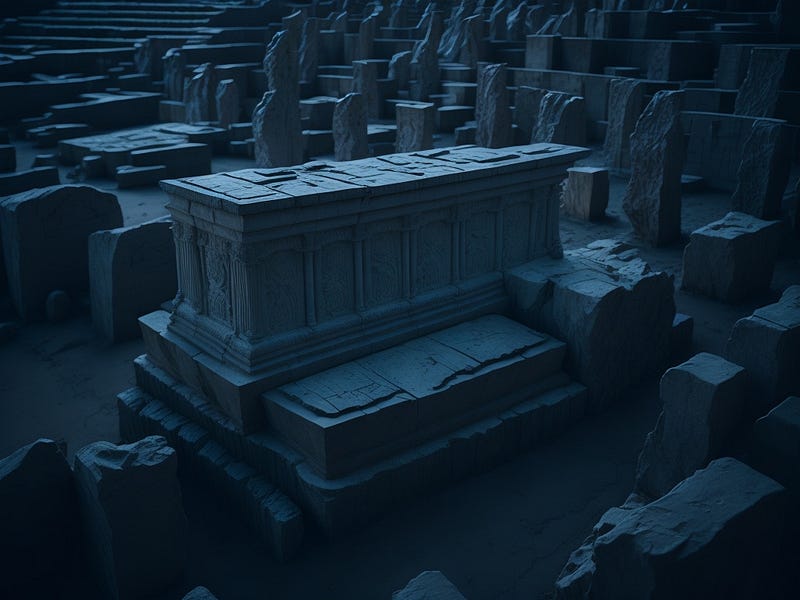Unearthed Ancient Sarcophagus Offers Insights into Roman Life
Written on
Chapter 1: Remarkable Find in France
In France, a remarkable archaeological discovery has come to light. An ancient sarcophagus, sealed for nearly 1800 years, was uncovered in a Roman necropolis. Archaeologists are now utilizing digital technology to explore its contents without disturbing the site.

While the image of sarcophagi may often evoke the grandeur of ancient Egypt, these burial structures were also prevalent in ancient Roman society. Between the 3rd and 1st century BCE, sarcophagi made from terracotta, stone, or metal were crafted, typically resembling a chest with a lid. Many were intricately designed with reliefs that depicted mythical tales or everyday life. By the 2nd century CE, portraits of the deceased began to appear on the panels, marking a significant evolution in burial customs.
Section 1.1: Insights from Burial Sites
Burial sites are invaluable to archaeological research as they reveal not only information about individuals but also broader cultural customs and practices of the time.
Subsection 1.1.1: Durocortorum - A Roman City in Gaul
Archaeologists from the French Institut National de Recherches Archéologiques Préventives (INRAP) conducted their excavations in Reims, which was historically known as Durocortorum. This city was the second-largest in Roman Gaul, following its conquest by Julius Caesar. It is estimated that the population could have reached up to 100,000 inhabitants.
Section 1.2: The Unopened Sarcophagus
Researchers from INRAP were excavating on Soussillon Street due to a new construction project when they stumbled upon an additional section of the necropolis that belonged to Durocortorum. Over the past 20 years, around 5,000 tombs have been discovered in this cemetery. The newly unearthed area spans approximately 1,200 square meters, just a small section of the extensive burial ground.
In a press release, the scientists announced the discovery of a remarkably well-preserved and unopened sarcophagus, believed to be about 1800 years old. It measures roughly one meter in height, 1.65 meters in length, and 80 cm in width, crafted from limestone with a lid weighing around 700 kg, secured by lead iron brackets. To ensure safe access, scientists first conducted a digital examination of the sarcophagus's interior. Inside, they discovered the remains of a woman, accompanied by funerary offerings and several personal items, including a mirror.

Excavations Reveal Historical Context “This discovery is unprecedented. For the first time, we have located a tomb in Reims that remains intact and has not been disturbed. We are the first to ‘look inside’ in nearly two millennia,” stated Agnès Balmelle, an archaeologist with INRAP, in an interview with “Le Parisien.”
The woman was likely around 40 years old and probably belonged to a higher social class. Artifacts found near her included four olive oil lamps, a small mirror, an amber ring, and a comb. Additionally, there were two glass containers, likely holding perfumed oils, inside the coffin.
Researchers noted that this finding enhances our understanding of the Durocortorum necropolis. Although the existence of this cemetery was known, much documentation was lost during World War I when the local museum was destroyed. Current excavations aim not only to identify more tombs but also to reconstruct the layout of the cemetery and clarify its boundaries.
Chapter 2: Historical Discovery of Chinese Emperor's Tomb
The first video details the remarkable discovery of an ancient sarcophagus beneath the Notre-Dame cathedral during restoration efforts. This find offers a glimpse into the lives of those who lived centuries ago.
The second video explores the implications of an 800-million-year-old sarcophagus, raising significant questions about human origins and ancient civilizations.
Support the Creator Dear readers, I would like to address a concern impacting content creators like myself on Medium.com. Despite our dedication to crafting valuable content, the compensation often falls short. If you appreciate my articles, please consider supporting me on my “Buy Me a Coffee” page. Your contributions, regardless of size, can inspire me to continue producing engaging and thought-provoking material. Thank you for being part of this journey!

